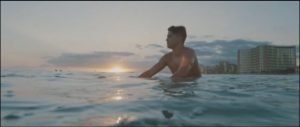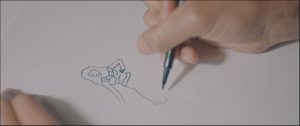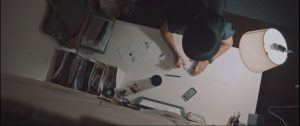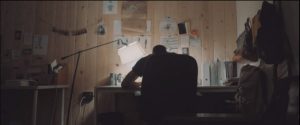Russell Brownley is one of my biggest inspirations when it comes to a career path in storytelling and his is a model that I hope to one day follow. After graduating from film school Russell started his career as a surf filmer, traveling the world making surf videos for companies such as Reef. He was tired of action based filmmaking in the surf world so when he got the chance to direct his first film, De Passage, he focused more on the art direction, cinematography and a narrative driven story more than surfing sequences. From there he transitioned into directing ads and branded content for brands such as Nike and Patron, as a way to pay the bills for his own passion projects. Some of these projects include long-form documentaries and starting the “We’re All Going to Die” art and film festival. One of these passion projects is the Craftsman Project, an ongoing series of short documentaries which will give a glimpse into the lives of people who make a living working with their hands.
This is the second short of the series and profiles Kahana Kalama, an ex-professional surfer, who is the owner of Aloha Beach Club a surf supply store with locations in North Park, San Diego and Kailua, Oahu. This story follows Kahana between San Diego and Hawaii as he manages both his shops and designs his new clothing line that is not only inspired by his home island of Oahu, but also completely manufactured there. Overall the film does a great job blending aesthetically pleasing shots with a deeply personal story of not only what his shops and his designs mean to him, but also what he considers his responsibilities not only to the brand and his employees, but to his Hawaii’n culture.
The film opens with stunning drone shots of the Hawaii’n coast which helps to establish Kahana’s roots in Hawaii, which is then further reinforced via a voice over (00:41) explaining what his Hawaii’n roots means to him. I really enjoy Russell’s use of the voice over technique in this piece instead of bouncing back and forth between interview shots and shots of Kahana’s work as I believe it would have taken viewers out of the story a little bit too much or too often. By using voice overs in this piece it allows one to be fully invested in Kahana’s story and gives the accompanying visual pieces even more emotional weight.
From there we are transported to Kahana’s shop in San Diego using a quick yet effective jump cut sequence and wide establishing shots accompanied by some simple on screen graphics to help the viewers with this quick transition. This is where the story truly begins to take shape as we start to see the physical process of Kahana’s art the same time that he is talking about what inspires his art and what design means to him personally . One of my favorite sequences in this short is the matched action sequence of Kahana sketching his designs (01:41-01:56). I especially the like the choice to start tight with a rack zoom, and move wider, instead of the more traditional, wide, medium, tight progression in most matched action sequences. This shot choice is made even more effective as Russell uses this sequence as a way to transition locations back to Hawaii and gives one the feeling that they are leaving the shop, instead of entering it.
Once back in Hawaii, we are treated to another establishing drone shot, this time accompanied by the sounds of airplanes taking off to reinforce the idea that we have traveled from San Diego to Hawaii. These types of smooth transitions from scene to scene have become one of my favorite parts of Russell’s work and this piece is when he is at his best. What struck me about this specific sequence in Hawaii was how well Russell was able to bring to life Kahana’s words about what it meant growing up in Hawaii. Kahana spoke to the fact that growing up Hawaii’n he was “Privy to life experiences and ways of thinking” that only someone who grew up in Hawaii could understand, such as the bond to the ocean, surfing, and deep familial and ancestral ties. The cinematography in this scene to me really shows how connected Kahana is to the ocean and to surfing. We get to see him in his element and can feel the deep bond that Kahana has to the ocean and Hawaii and can start to understand how these experiences inspire his work. The fact that most of this was filmed out in the water adds to this experience as you start to feel like you are in the water surfing with Kahana and can start to feel why he is so drawn to the ocean and surfing. (02:30-02:57). We also get another great transition as Russell uses a wave crashing over the camera and its natural sound to shift the tone from Kahana’s inspiration to how he is now fulfilling his dream of bringing his brand back to Hawaii and why having his brand back in Hawaii is so important to him.
After this shift in tone we get to see some more great cinematography as we are shown the actual manufacturing of his brand “Aloha Shirts. Russell uses effective jump cut sequences to move the process along at a pleasant pace, not too long where one could get bored, but not too fast to where a viewer might not think this is not an important part of the story. To help with the pacing Russell mixes in some short matched action sequences of screen printing and sewing to highlight the fact that all of the shirts are indeed handmade in Hawaii, by Hawaiians, a fact that Kahana is extremely proud of. (03:33-04:00) The story of Kahana bringing his brand back to his home continues when his new brick and mortar shop in his home town is highlighted as a way to positively impact his hometown as well as inspire future generations.
Russell gives us one more great transition back from Hawaii to San Diego (05:07-05:15) as Kahana’s story of his culture, inspiration, and brand all get wrapped up and tied together into a nice little coda, and the film ends, where Kahana’s story begins…in the ocean.
Overall this piece is what I want my future work to look like. Not only do the visual aspects of the piece work to help tell Kahana’s story, the audio story itself is what really brings this piece together. The answers that Russell was able to pull out of Kahana in regards to why he has decided to bring his manufacturing back to Oahu, instead of outsourcing to China is really what made this piece one that can resonate with more than just surfers, and highlights Russell’s ability to create a comfortable and friendly rapport with his subjects, which is an incredibly difficult thing for filmmakers to do. Overall, The way Russell is able to tell a compelling human story while still maintaining an artistic edge in the way it is shot and edited is really what speaks to the filmmaker inside of me and something we can all learn from.






Leave a Reply